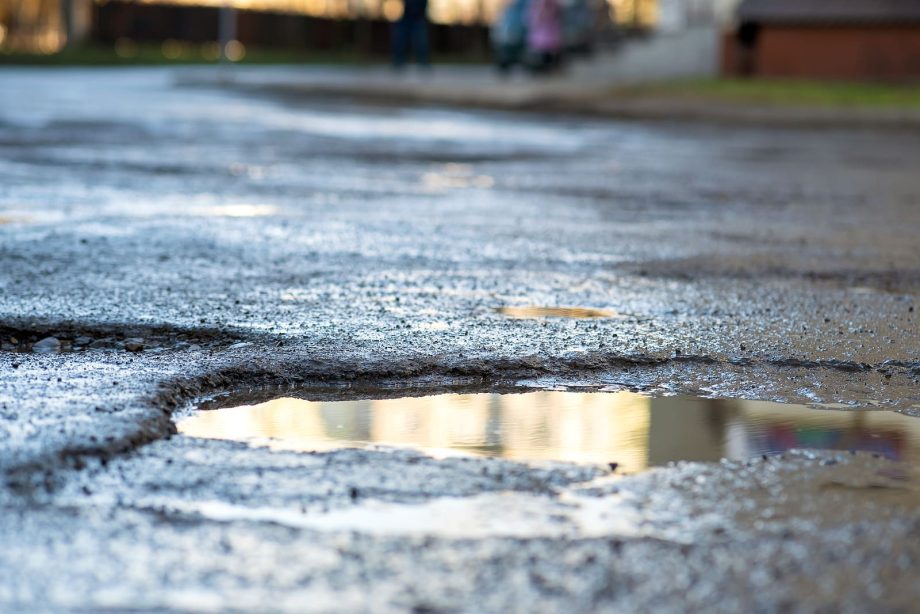America’s Infrastructure Crisis: Outdated Power Grid, Digital Divide, and Crumbling Roadways Demand Urgent Action
(STL.News)—The United States stands at a critical crossroads regarding the state of its infrastructure. From an outdated electrical grid and a growing digital divide to deteriorating highways and structurally deficient bridges, the challenges are both vast and urgent. As demand increases and climate threats intensify, America’s infrastructure—once the envy of the world—now requires unprecedented levels of investment and modernization.
This article explores the three essential components of American infrastructure: the electrical grid, internet access, and the nation’s roadways, analyzing the issues, federal investments, and potential future outcomes.
The Electrical Grid: Powering an Outdated System
The U.S. electrical grid is a complex, interconnected system built largely during the mid-20th century. It was designed for a different era without today’s high energy consumption, renewable power sources, or cybersecurity threats.
According to the Department of Energy, roughly 70% of transmission lines and transformers are over 25 years old, with many operating beyond their intended lifespan. This has led to frequent power outages, which have increased in both frequency and duration over the last decade. Notable blackouts, such as the 2021 Texas winter storm and rolling outages in California, reveal how vulnerable the grid is to both natural disasters and surging demand.
One of the greatest threats to the electrical grid is climate change. More intense heatwaves, hurricanes, and wildfires strain utility systems, causing equipment failures and prolonged outages. Additionally, the transition to renewable energy, such as wind and solar, is outpacing the grid’s ability to handle distributed power sources efficiently.
Cybersecurity is another growing concern. In 2021, the Colonial Pipeline ransomware attack exposed the fragility of critical infrastructure. Since then, federal authorities have increased efforts to secure the grid from digital threats, but many systems remain outdated and underprotected.
The Bipartisan Infrastructure Law, passed in late 2021, allocates $65 billion toward power infrastructure upgrades, including grid modernization, transmission line development, and clean energy integration. While this is a step in the right direction, many experts argue that trillions—not billions—are ultimately needed to overhaul the grid nationwide.
Internet Infrastructure: The Digital Divide Persists
Access to high-speed internet has become a basic necessity, particularly in an era defined by remote work, virtual education, and digital commerce. Yet, millions of Americans still lack reliable internet service, especially in rural and underserved communities.
As of 2024, it’s estimated that over 14 million Americans have no access to broadband, while tens of millions more face slow, unreliable, or unaffordable connections. Urban and suburban areas generally benefit from high-speed fiber optic networks and 5G mobile infrastructure. In contrast, rural communities often rely on outdated DSL or even satellite connections with high latency and limited speeds.
The cost of internet service is also a significant issue. U.S. internet prices rank among the highest in the developed world, partly due to ISP monopolies that limit competition. In many regions, consumers have only one or two viable providers, leading to stagnant innovation and high monthly bills.
The federal government has taken notice. The infrastructure bill earmarked another $65 billion specifically for broadband expansion, focusing on affordability, access, and competition. The FCC and USDA have also launched targeted programs to deploy broadband in rural America.
Meanwhile, companies like SpaceX invest heavily in low-Earth orbit satellite internet through its Starlink program. This emerging technology promises to bring high-speed access to even the most remote areas, but adoption remains limited due to cost and early-phase technical issues.
Closing the digital divide is not just a matter of convenience—it’s about economic opportunity, education equity, and national competitiveness. Ensuring every American can access affordable, fast internet is essential for a 21st-century economy.
Roadways and Bridges: America’s Crumbling Highways
No area of infrastructure is more visible to the public than America’s roads—and the view isn’t pretty. According to the American Society of Civil Engineers (ASCE), more than 43% of public roads are in poor or mediocre condition, contributing to longer commute times, increased vehicle repair costs, and reduced safety.
Additionally, over 45,000 bridges in the U.S. are considered structurally deficient, placing travelers at risk and threatening supply chain continuity. Many of these bridges were built in the 1950s and 1960s and have received only minimal maintenance over the years.
Urban congestion continues to plague major metro areas. In 2023 alone, traffic congestion cost U.S. drivers $80 billion in lost time and fuel, according to the Texas A&M Transportation Institute. Outdated roadway designs, population growth, and poor maintenance are to blame.
Moreover, infrastructure design in many American cities prioritizes cars over people, with limited safe spaces for pedestrians, cyclists, or public transit users. This has led to increased traffic fatalities and limited mobility options, especially for lower-income communities.
To combat these challenges, the infrastructure bill provides $110 billion for roads, bridges, and major infrastructure projects. It also includes funding to improve public transit, build EV charging networks, and support sustainable transportation initiatives. Some of this funding is dedicated to “complete streets” projects designed to make urban environments safer for all users, not just cars.
Despite these efforts, red tape, slow permitting processes, and local political disputes often delay or derail major projects. Additionally, skilled labor shortages across the construction industry threaten to slow progress even as funds become available.
Copyright 2025 – St. Louis Media, LLC. All rights reserved. This material may not be published, broadcast, or redistributed.
For the latest news, weather, and video, head to STL.News.
